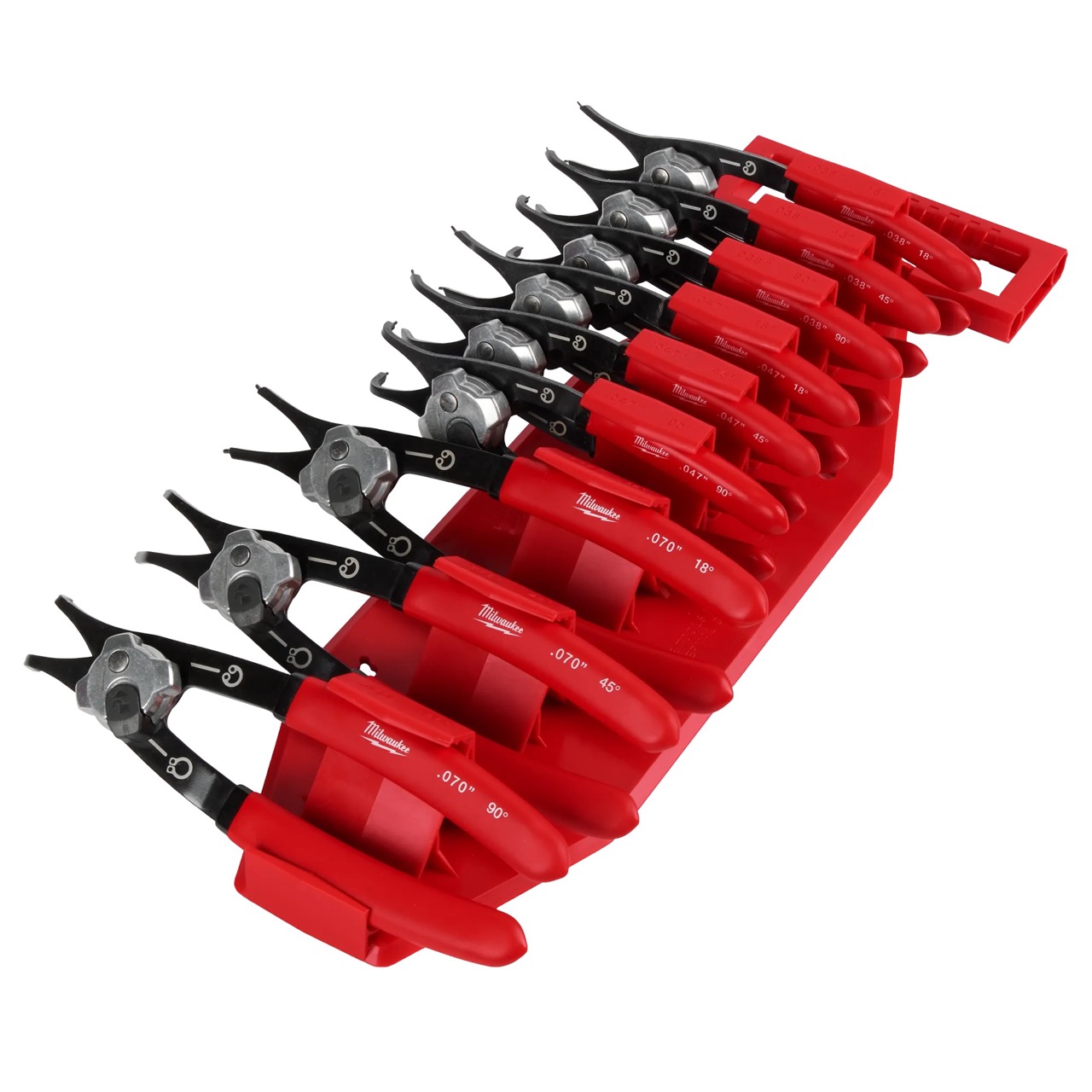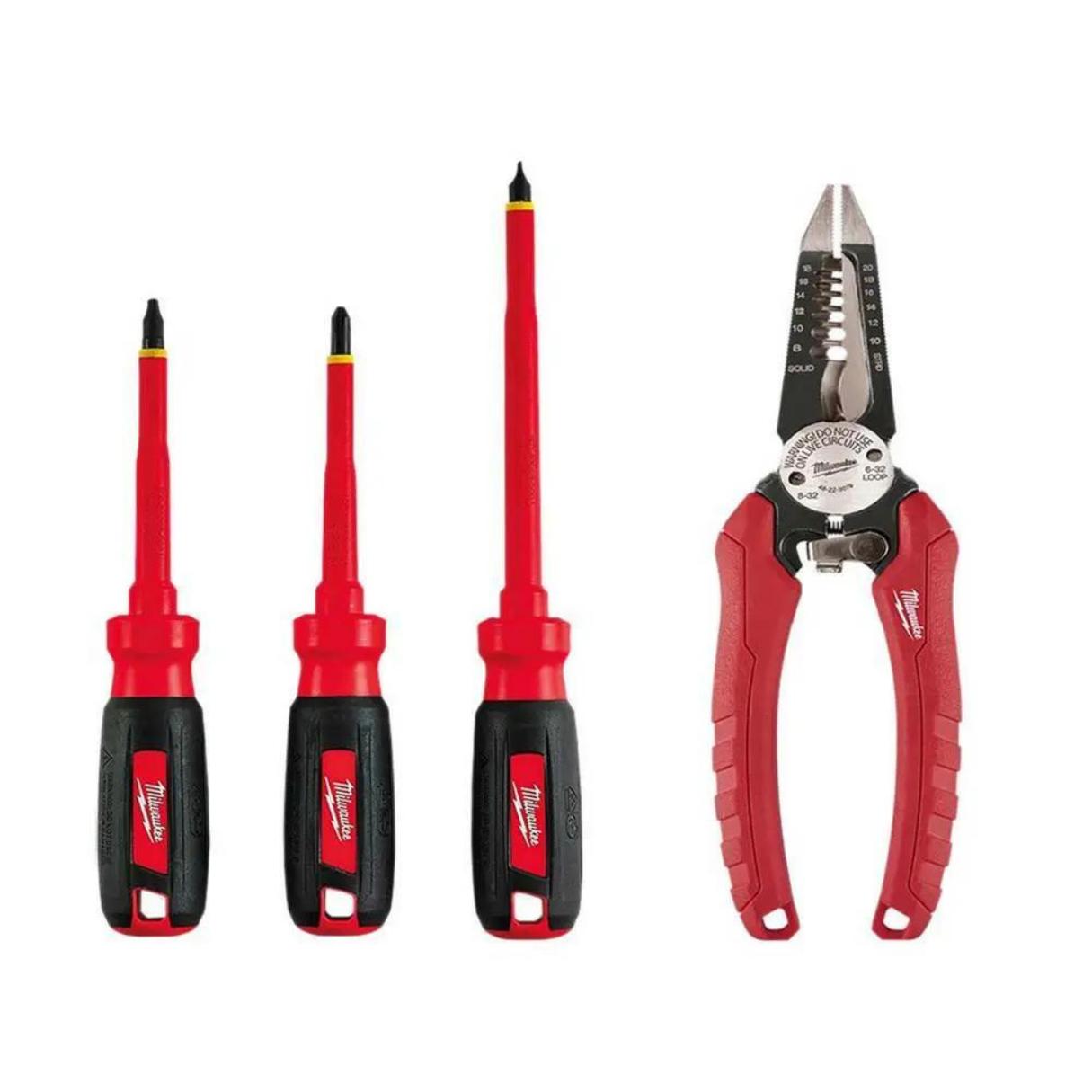

Articles
How To Market Hand Tools
Modified: January 5, 2024
Learn effective strategies for marketing hand tools with our insightful articles. Discover valuable tips and techniques to boost your hand tool sales and reach a wider audience.
(Many of the links in this article redirect to a specific reviewed product. Your purchase of these products through affiliate links helps to generate commission for Storables.com, at no extra cost. Learn more)
Introduction
In the realm of construction, woodworking, and do-it-yourself projects, hand tools are indispensable assets that empower individuals to bring their creative visions to life. From hammers and screwdrivers to wrenches and pliers, these manual implements are essential for tasks ranging from basic repairs to intricate craftsmanship. As a result, the hand tools market is a dynamic and vital sector within the larger hardware and home improvement industry.
Understanding the nuances of marketing hand tools is essential for businesses aiming to thrive in this competitive landscape. By embracing innovative strategies and leveraging the power of digital platforms, companies can effectively engage with their target audience and build enduring brand recognition. This article delves into the intricacies of marketing hand tools, offering valuable insights and actionable tips to help businesses carve out a distinctive presence in this thriving market.
As we embark on this exploration of marketing hand tools, it's crucial to recognize the multifaceted nature of this industry. From traditional brick-and-mortar stores to the burgeoning e-commerce realm, hand tool manufacturers and retailers must navigate diverse channels to connect with their audience. Moreover, the diverse needs and preferences of consumers further underscore the importance of a nuanced and comprehensive marketing approach.
In the subsequent sections, we will delve into the various facets of marketing hand tools, beginning with a comprehensive understanding of the market landscape and culminating in the measurement and analysis of marketing success. By embracing the principles and strategies outlined in this article, businesses can equip themselves with the knowledge and tools needed to thrive in the dynamic and ever-evolving hand tools market.
Key Takeaways:
- Understanding the diverse needs of consumers and embracing digital marketing strategies are crucial for businesses to thrive in the competitive hand tools market. By connecting with their audience and leveraging the power of SEO, content marketing, and social media, businesses can elevate their brand visibility and relevance.
- Providing exceptional customer service and measuring marketing success are essential for businesses to differentiate themselves and foster enduring consumer loyalty. By prioritizing accessibility, transparency, and personalization, businesses can refine their strategies iteratively and propel their brand towards sustained success.
Read more: How To Hand Form Body Panels With Hand Tools
Understanding the Hand Tools Market
Before delving into the intricacies of marketing hand tools, it is imperative to gain a comprehensive understanding of the market landscape. The hand tools market encompasses a wide array of products, ranging from basic implements like hammers and screwdrivers to specialized tools such as torque wrenches and pipe cutters. This diverse array of products caters to a broad spectrum of consumers, including professional tradespeople, DIY enthusiasts, and hobbyists.
One of the defining characteristics of the hand tools market is its resilience and adaptability. Despite the proliferation of power tools and automated machinery, hand tools continue to occupy a pivotal role in various industries and household settings. Their versatility, portability, and ease of use make them indispensable for a myriad of tasks, ensuring a steady demand for these products.
Moreover, the hand tools market is influenced by evolving consumer preferences and technological advancements. As sustainability and eco-friendliness gain prominence, there is a growing demand for hand tools crafted from durable, environmentally friendly materials. Additionally, ergonomic designs and innovative features are increasingly sought after, reflecting a consumer base that values both functionality and user experience.
Furthermore, the market is shaped by the proliferation of e-commerce platforms and the digitalization of retail. Online marketplaces offer unparalleled reach and accessibility, enabling hand tool manufacturers and retailers to connect with a global audience. This shift towards online purchasing has prompted businesses to recalibrate their marketing strategies, placing greater emphasis on digital engagement and e-commerce optimization.
By recognizing the multifaceted nature of the hand tools market, businesses can position themselves to capitalize on emerging opportunities and navigate potential challenges. Understanding the evolving needs and preferences of consumers, as well as the impact of digitalization on retail, is pivotal for devising effective marketing strategies that resonate with target audiences.
Identifying Your Target Audience
Central to any successful marketing endeavor is a deep understanding of the target audience. In the realm of hand tools, identifying and comprehending the diverse segments of consumers is paramount for crafting tailored marketing strategies that resonate with their specific needs and preferences.
The target audience for hand tools encompasses a broad spectrum of individuals, each with distinct motivations and requirements. Professional tradespeople, including carpenters, electricians, plumbers, and mechanics, constitute a significant segment of the market. These professionals prioritize durability, precision, and reliability in their tools, seeking implements that can withstand rigorous, daily use in demanding work environments.
DIY enthusiasts and hobbyists represent another vital demographic within the hand tools market. For this segment, factors such as affordability, versatility, and user-friendliness are pivotal. They often seek tools that facilitate a wide range of projects, from simple household repairs to intricate crafting endeavors, and value products that offer a balance of quality and accessibility.
Understanding the distinct needs and preferences of these diverse consumer segments is foundational for formulating targeted marketing initiatives. By conducting thorough market research, businesses can gain insights into the specific pain points, aspirations, and purchasing behaviors of their target audience, thereby informing the development of tailored marketing campaigns.
Moreover, the digitalization of commerce has expanded the avenues through which businesses can engage with their target audience. Social media platforms, online forums, and industry-specific websites serve as valuable touchpoints for connecting with consumers, gathering feedback, and cultivating brand loyalty. By leveraging these digital channels, businesses can foster meaningful relationships with their audience, positioning themselves as trusted authorities within the hand tools domain.
Ultimately, by meticulously identifying and understanding the nuances of their target audience, businesses can refine their marketing strategies to resonate with the specific needs and aspirations of consumers. This targeted approach not only enhances brand relevance and resonance but also fosters enduring connections with the diverse segments that comprise the vibrant hand tools market.
Creating a Marketing Plan
A well-crafted marketing plan serves as the guiding blueprint for businesses seeking to effectively promote their hand tools and connect with their target audience. This comprehensive strategy encompasses a range of initiatives designed to elevate brand visibility, engage consumers, and drive sales. By delineating clear objectives, identifying key tactics, and allocating resources judiciously, businesses can position themselves for sustained success in the competitive hand tools market.
The foundation of a robust marketing plan lies in defining clear and achievable goals. Whether the aim is to increase brand awareness, expand market share, or launch a new product line, establishing specific and measurable objectives provides a roadmap for the marketing endeavors ahead.
Market research serves as the cornerstone of informed decision-making within the marketing plan. By conducting thorough analyses of market trends, consumer behaviors, and competitive landscapes, businesses can gain valuable insights that inform their strategic approach. Understanding the unique value propositions of their hand tools, as well as the distinct needs and preferences of their target audience, enables businesses to tailor their marketing initiatives effectively.
The marketing plan should encompass a diverse array of tactics, spanning both traditional and digital channels. From print advertisements and trade show participation to search engine optimization (SEO) and social media marketing, a multifaceted approach ensures comprehensive reach and engagement. Leveraging the power of compelling visual content, such as demonstration videos and product showcases, can further enhance the efficacy of the marketing plan, captivating audiences and conveying the value of the hand tools offered.
Allocating resources judiciously is pivotal for the successful execution of the marketing plan. Whether budgeting for advertising expenditures, personnel, or technological infrastructure, prudent resource allocation ensures that the marketing initiatives are executed effectively and efficiently, maximizing their impact on brand visibility and consumer engagement.
Regular evaluation and adaptation are integral components of the marketing plan. By monitoring key performance indicators, soliciting customer feedback, and staying attuned to market dynamics, businesses can refine their strategies iteratively, ensuring that the marketing plan remains agile and responsive to evolving consumer needs and industry trends.
In essence, a well-crafted marketing plan serves as the compass that guides businesses through the dynamic terrain of the hand tools market. By articulating clear objectives, leveraging comprehensive market research, and embracing a diverse array of tactics, businesses can forge a path to sustained relevance and success in this vibrant industry.
Utilizing Digital Marketing Strategies
In the contemporary landscape of commerce, digital marketing has emerged as a cornerstone of promotional endeavors, offering unparalleled reach, precision targeting, and measurable impact. For businesses operating in the hand tools market, harnessing the power of digital marketing strategies is pivotal for engaging with their audience, driving brand visibility, and fostering enduring customer relationships.
Search engine optimization (SEO) stands as a linchpin of digital marketing, enabling businesses to enhance their online visibility and connect with individuals actively seeking hand tools and related solutions. By optimizing their website content, incorporating relevant keywords, and cultivating a robust backlink profile, businesses can ascend the search engine rankings, positioning themselves as authoritative resources within the hand tools domain.
Content marketing serves as a potent vehicle for conveying the value and utility of hand tools while nurturing consumer trust and loyalty. By crafting compelling blog posts, informative articles, and engaging product descriptions, businesses can showcase their expertise, address consumer pain points, and cultivate a loyal following. Furthermore, the dissemination of visually captivating content, such as infographics and instructional videos, can enrich the consumer experience and fortify brand resonance.
Social media platforms offer a dynamic and interactive arena for engaging with consumers and amplifying brand messaging. By cultivating a vibrant social media presence, businesses can foster meaningful dialogues, showcase product innovations, and elicit valuable feedback from their audience. Leveraging targeted advertising campaigns on platforms such as Facebook, Instagram, and LinkedIn enables businesses to reach specific demographics with tailored messaging, amplifying the impact of their digital marketing efforts.
Email marketing remains a stalwart component of digital marketing strategies, providing a direct line of communication with existing and prospective customers. By delivering personalized, value-driven content directly to consumers’ inboxes, businesses can nurture leads, announce promotions, and fortify brand loyalty. Segmentation and automation further enhance the efficacy of email marketing, ensuring that the right message reaches the right audience at the opportune moment.
Embracing digital marketing strategies empowers businesses to transcend geographical boundaries, cultivate enduring connections with their audience, and fortify their position within the competitive hand tools market. By harnessing the potency of SEO, content marketing, social media engagement, and email outreach, businesses can orchestrate comprehensive digital campaigns that resonate with consumers and propel their brand to new heights of visibility and relevance.
Leveraging Social Media
Social media platforms have revolutionized the landscape of consumer engagement, offering businesses unprecedented opportunities to connect with their audience, amplify brand messaging, and cultivate vibrant communities. For businesses operating in the hand tools market, leveraging social media presents a dynamic avenue for showcasing product innovations, fostering brand loyalty, and eliciting valuable feedback from consumers.
One of the primary advantages of social media is its capacity for interactive engagement. By maintaining an active presence on platforms such as Facebook, Instagram, Twitter, and LinkedIn, businesses can initiate meaningful conversations with their audience, responding to inquiries, addressing concerns, and celebrating customer successes. This two-way dialogue not only humanizes the brand but also instills a sense of trust and accessibility among consumers.
Visual storytelling serves as a compelling mechanism for captivating audiences and conveying the value of hand tools. Through visually engaging posts, including product demonstrations, project showcases, and behind-the-scenes glimpses, businesses can showcase the versatility and utility of their tools while fostering an emotional connection with their audience. Furthermore, the integration of user-generated content, such as customer testimonials and project submissions, amplifies the authenticity and relatability of the brand.
Social media platforms offer robust advertising capabilities that enable businesses to precisely target their messaging to specific demographics. By leveraging demographic data, consumer interests, and behavioral patterns, businesses can craft tailored ad campaigns that resonate with their audience, driving engagement and conversions. Additionally, the performance metrics provided by social media advertising enable businesses to refine their strategies iteratively, maximizing the impact of their promotional endeavors.
Community building is a central tenet of social media engagement, empowering businesses to foster vibrant networks of enthusiasts and loyal customers. By curating groups, hosting live Q&A sessions, and facilitating discussions around industry trends and project ideas, businesses can position themselves as trusted authorities within the hand tools domain, nurturing enduring relationships with their audience.
By leveraging the dynamic capabilities of social media, businesses can amplify their brand messaging, engage with their audience, and fortify their position within the competitive hand tools market. Through interactive engagement, visual storytelling, targeted advertising, and community building, businesses can cultivate a robust social media presence that resonates with consumers and propels their brand towards sustained visibility and relevance.
Utilize social media platforms to showcase the durability and versatility of your hand tools. Create engaging content such as tutorial videos and customer testimonials to demonstrate their value and attract potential buyers.
Building a Strong Brand Presence
In the bustling landscape of the hand tools market, cultivating a robust and distinctive brand presence is pivotal for capturing consumer attention, fostering brand loyalty, and differentiating the business from competitors. A strong brand presence not only elevates visibility but also imbues the business with a sense of credibility, trustworthiness, and resonance within the minds of consumers.
Central to building a strong brand presence is the cultivation of a compelling brand identity. This encompasses the development of a distinctive brand voice, visual aesthetics, and core messaging that resonate with the values and aspirations of the target audience. By articulating a clear and compelling brand narrative, businesses can forge an emotional connection with consumers, fostering enduring brand loyalty.
Consistency serves as a linchpin of brand building, permeating every facet of the business’s communication and engagement. From the design of marketing collateral and packaging to the tone of customer interactions and the visual aesthetic of digital content, maintaining a cohesive brand image reinforces recognition and trust, fortifying the brand’s presence within the consciousness of consumers.
Storytelling stands as a potent mechanism for encapsulating the essence of the brand and conveying its value proposition. By narrating the journey of the brand, the craftsmanship behind its products, and the impact it has on consumers’ lives, businesses can elicit an emotional response, fostering resonance and affinity among their audience. Furthermore, storytelling humanizes the brand, imbuing it with relatability and authenticity.
Engaging with the community and industry stakeholders is instrumental for fortifying brand presence. By participating in industry events, sponsoring workshops, and collaborating with influencers and thought leaders, businesses can position themselves as integral contributors to the hand tools domain, cultivating authority and trust within their sphere of influence.
Embracing corporate social responsibility initiatives further enhances the brand presence, underscoring the business’s commitment to ethical and sustainable practices. Whether through environmental conservation efforts, community outreach programs, or ethical sourcing practices, businesses can align their brand with values that resonate with consumers, fostering a positive and enduring brand image.
By meticulously crafting a compelling brand identity, maintaining consistency, embracing storytelling, engaging with the community, and championing ethical practices, businesses can build a strong brand presence that resonates with consumers and propels their position within the competitive hand tools market. This enduring brand presence not only elevates visibility but also fosters enduring connections and loyalty among the diverse segments of the consumer base.
Establishing Partnerships and Collaborations
In the dynamic landscape of the hand tools market, forging strategic partnerships and collaborations stands as a potent avenue for expanding reach, fostering innovation, and amplifying brand resonance. By aligning with complementary businesses, industry stakeholders, and thought leaders, hand tool manufacturers and retailers can unlock new opportunities, elevate their value proposition, and fortify their position within the competitive domain.
One of the primary advantages of partnerships lies in the amplification of reach and visibility. By collaborating with distributors, retailers, or e-commerce platforms, businesses can expand their market presence, reaching new audiences and territories that may have been previously inaccessible. Furthermore, strategic alliances with industry influencers and thought leaders can amplify brand messaging and foster credibility within the hand tools domain.
Partnerships and collaborations serve as fertile ground for fostering innovation and product development. By aligning with manufacturers of complementary products or materials, businesses can co-create innovative solutions that address evolving consumer needs and industry trends. Furthermore, collaborative ventures can yield new product lines, limited-edition releases, and exclusive offerings that resonate with consumers and differentiate the brand within the market.
Strategic partnerships offer a gateway to accessing new channels of distribution and sales. By aligning with businesses that boast extensive distribution networks or a strong online presence, hand tool manufacturers and retailers can amplify their product visibility and accessibility, driving sales and market penetration. Additionally, collaborations with industry influencers can facilitate product endorsements and authentic advocacy, further amplifying the brand’s reach and resonance.
Collaborative marketing initiatives, such as co-sponsored events, joint advertising campaigns, and cross-promotional activities, can amplify brand messaging and engagement. By leveraging the combined reach and resources of collaborative partners, businesses can orchestrate impactful marketing endeavors that resonate with consumers, fostering enduring connections and brand loyalty.
Moreover, partnerships and collaborations can serve as a conduit for knowledge exchange and industry leadership. By aligning with research institutions, industry associations, and educational entities, businesses can stay abreast of emerging trends, technological advancements, and best practices, positioning themselves as forward-thinking authorities within the hand tools domain.
By embracing strategic partnerships and collaborations, businesses can expand their reach, foster innovation, and fortify their brand presence within the competitive hand tools market. Whether through amplifying visibility, fostering innovation, accessing new distribution channels, or orchestrating impactful marketing initiatives, partnerships and collaborations offer a myriad of opportunities for businesses to elevate their position and relevance within the industry.
Providing Exceptional Customer Service
In the bustling realm of the hand tools market, the provision of exceptional customer service stands as a cornerstone of success, fostering enduring customer loyalty, fortifying brand reputation, and propelling business growth. By prioritizing the delivery of unparalleled service experiences, hand tool manufacturers and retailers can differentiate themselves within the competitive landscape, nurturing enduring connections with their audience and cultivating a sterling reputation within the industry.
Central to exceptional customer service is a commitment to accessibility and responsiveness. By offering multiple channels for customer inquiries and support, including responsive helplines, email correspondence, and live chat features, businesses can ensure that consumers receive timely assistance and resolutions to their queries. Moreover, leveraging digital platforms to provide self-help resources and troubleshooting guides empowers consumers to address their concerns independently, fostering a seamless and empowering customer experience.
Transparency and integrity serve as foundational principles of exceptional customer service. By providing clear and accurate information regarding product specifications, warranties, and after-sales support, businesses can instill trust and confidence within their consumer base. Furthermore, transparent communication regarding pricing, promotions, and product availability fosters a sense of reliability and authenticity, fortifying the brand’s reputation.
Personalization is pivotal for fostering meaningful connections with consumers. By leveraging customer relationship management (CRM) systems and data analytics, businesses can gain insights into consumer preferences, purchase histories, and engagement patterns, enabling them to tailor their interactions and offerings to align with individual needs. Personalized recommendations, exclusive offers, and targeted communication convey a sense of attentiveness and care, fostering enduring brand loyalty.
Embracing a culture of continuous improvement and accountability is instrumental for providing exceptional customer service. By soliciting and acting upon customer feedback, addressing concerns proactively, and rectifying issues with urgency and empathy, businesses can demonstrate their commitment to consumer satisfaction and foster enduring relationships. Moreover, fostering a customer-centric ethos within the organizational culture ensures that every touchpoint with the consumer embodies the principles of exceptional service.
Exceptional customer service extends beyond the point of sale, encompassing after-sales support and engagement. By providing comprehensive product warranties, facilitating hassle-free returns and exchanges, and offering ongoing support and guidance, businesses can fortify their consumer relationships, instilling a sense of confidence and assurance within their audience.
By prioritizing the provision of exceptional customer service, businesses can differentiate themselves within the competitive hand tools market, fortifying brand reputation, and fostering enduring consumer loyalty. Through accessibility, transparency, personalization, continuous improvement, and after-sales support, businesses can elevate their service experiences, nurturing enduring connections with their audience and propelling their brand towards sustained success.
Read more: How To Label Your Hand Tools
Measuring and Analyzing Marketing Success
Effective marketing strategies are underpinned by the ability to measure and analyze their impact, enabling businesses to refine their approaches, optimize resource allocation, and drive sustained growth. In the dynamic and competitive landscape of the hand tools market, the ability to gauge marketing success is pivotal for steering businesses towards enduring relevance and resonance within the industry.
Key performance indicators (KPIs) serve as the compass for evaluating marketing success. These metrics encompass a diverse array of parameters, including website traffic, conversion rates, customer acquisition costs, and customer lifetime value. By tracking KPIs meticulously, businesses can gain insights into the efficacy of their marketing initiatives, identifying areas of strength and opportunities for improvement.
Consumer engagement metrics, such as click-through rates, social media interactions, and email open rates, offer valuable insights into the resonance of marketing messaging. By analyzing these metrics, businesses can discern the types of content and messaging that captivate their audience, refining their strategies to optimize engagement and brand visibility.
Conversion metrics, including lead generation rates, sales conversion rates, and average order values, provide a comprehensive understanding of the impact of marketing efforts on driving tangible business outcomes. By scrutinizing these metrics, businesses can discern the efficacy of their sales funnel, identifying potential bottlenecks and opportunities for optimization to enhance conversion rates and revenue generation.
Customer retention and satisfaction metrics, such as churn rates, customer satisfaction scores, and net promoter scores, offer insights into the enduring impact of marketing initiatives on fostering brand loyalty and advocacy. By monitoring these metrics, businesses can gauge the resonance of their brand messaging, the quality of their customer service, and the efficacy of their post-purchase engagement, refining their approaches to fortify enduring consumer relationships.
Market share and competitive analysis provide a holistic view of the business’s position within the hand tools market. By scrutinizing market share data and conducting competitive benchmarking, businesses can gain insights into their relative standing, identifying areas for growth, differentiation, and competitive advantage within the industry.
Iterative refinement is integral to the process of measuring and analyzing marketing success. By leveraging insights gleaned from KPIs and performance metrics, businesses can recalibrate their strategies iteratively, optimizing their marketing endeavors to align with evolving consumer needs, industry trends, and competitive dynamics.
In essence, the ability to measure and analyze marketing success is pivotal for steering businesses towards sustained relevance and resonance within the dynamic hand tools market. By scrutinizing KPIs, consumer engagement metrics, conversion metrics, customer retention and satisfaction metrics, and market share data, businesses can refine their strategies iteratively, propelling their brand towards enduring success and growth within the industry.
Conclusion
Navigating the vibrant and competitive landscape of the hand tools market demands a nuanced and comprehensive approach to marketing. By embracing innovative strategies, fostering enduring consumer relationships, and fortifying brand resonance, businesses can carve out a distinctive presence within this dynamic industry.
Understanding the multifaceted nature of the hand tools market is foundational for devising effective marketing strategies. From professional tradespeople to DIY enthusiasts, the diverse consumer segments within this market demand tailored approaches that resonate with their specific needs and aspirations.
A well-crafted marketing plan serves as the guiding blueprint for businesses seeking to elevate brand visibility, engage consumers, and drive sales within the hand tools market. By articulating clear objectives, leveraging comprehensive market research, and embracing a diverse array of tactics, businesses can forge a path to sustained relevance and success.
Embracing digital marketing strategies and leveraging the dynamic capabilities of social media empowers businesses to transcend geographical boundaries, cultivate enduring connections with their audience, and fortify their position within the competitive hand tools market. By harnessing the potency of SEO, content marketing, social media engagement, and email outreach, businesses can orchestrate comprehensive digital campaigns that resonate with consumers and propel their brand to new heights of visibility and relevance.
Building a strong brand presence, establishing strategic partnerships and collaborations, and providing exceptional customer service are instrumental for differentiating businesses within the hand tools market. By fostering enduring connections, fortifying brand reputation, and propelling business growth, businesses can elevate their position and resonance within this dynamic industry.
Measuring and analyzing marketing success is pivotal for steering businesses towards sustained relevance and resonance within the dynamic hand tools market. By scrutinizing KPIs, consumer engagement metrics, conversion metrics, customer retention and satisfaction metrics, and market share data, businesses can refine their strategies iteratively, propelling their brand towards enduring success and growth within the industry.
In conclusion, the hand tools market presents a dynamic and fertile terrain for businesses to cultivate enduring consumer relationships, fortify brand resonance, and drive sustained growth. By embracing innovative strategies, fostering enduring connections, and refining their approaches iteratively, businesses can position themselves for enduring relevance and success within this vibrant industry.
Frequently Asked Questions about How To Market Hand Tools
Was this page helpful?
At Storables.com, we guarantee accurate and reliable information. Our content, validated by Expert Board Contributors, is crafted following stringent Editorial Policies. We're committed to providing you with well-researched, expert-backed insights for all your informational needs.














0 thoughts on “How To Market Hand Tools”